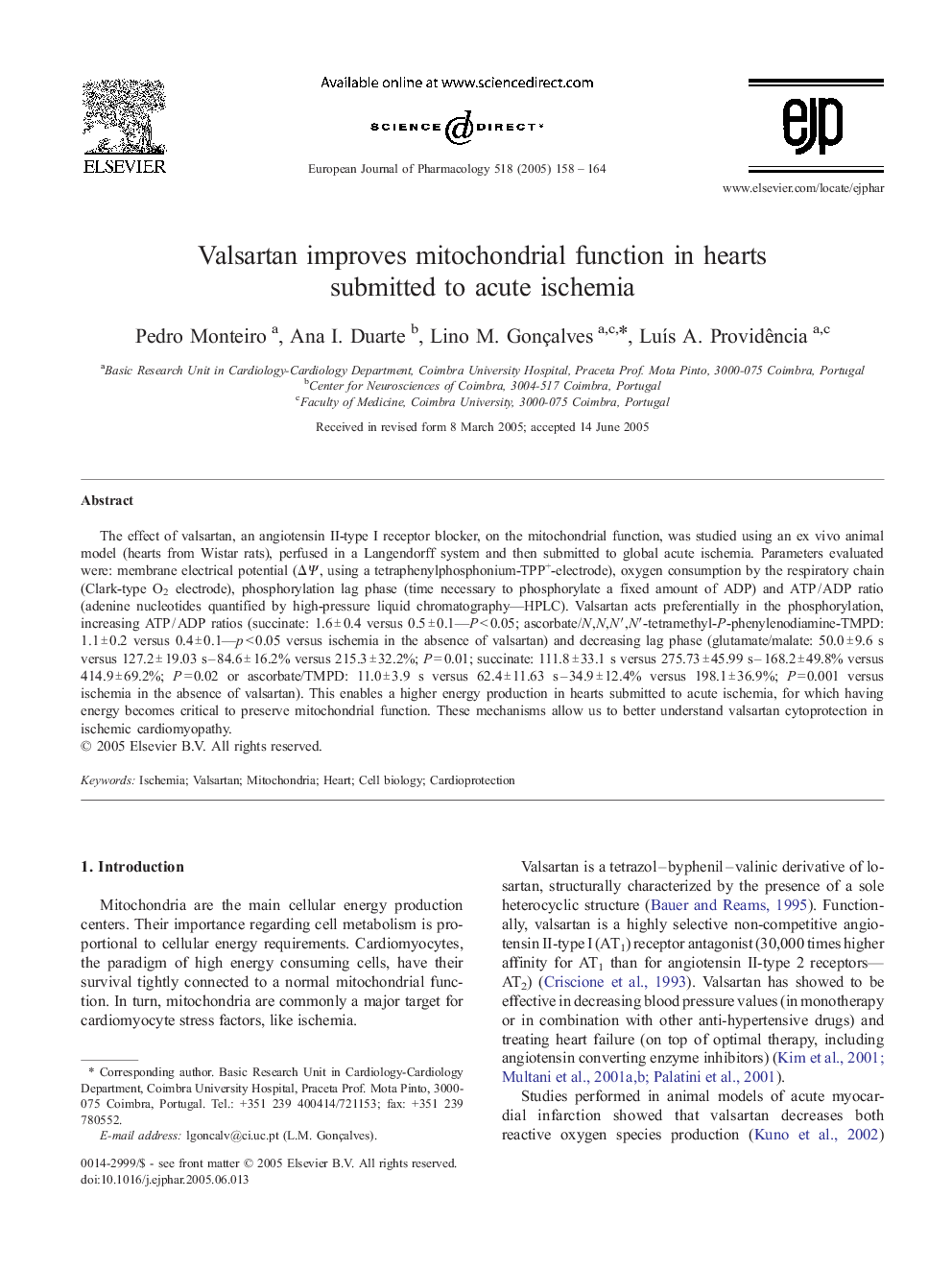| Article ID | Journal | Published Year | Pages | File Type |
|---|---|---|---|---|
| 9921188 | European Journal of Pharmacology | 2005 | 7 Pages |
Abstract
The effect of valsartan, an angiotensin II-type I receptor blocker, on the mitochondrial function, was studied using an ex vivo animal model (hearts from Wistar rats), perfused in a Langendorff system and then submitted to global acute ischemia. Parameters evaluated were: membrane electrical potential (ÎΨ, using a tetraphenylphosphonium-TPP+-electrode), oxygen consumption by the respiratory chain (Clark-type O2 electrode), phosphorylation lag phase (time necessary to phosphorylate a fixed amount of ADP) and ATP / ADP ratio (adenine nucleotides quantified by high-pressure liquid chromatography-HPLC). Valsartan acts preferentially in the phosphorylation, increasing ATP / ADP ratios (succinate: 1.6 ± 0.4 versus 0.5 ± 0.1-P < 0.05; ascorbate/N,N,Nâ²,Nâ²-tetramethyl-P-phenylenodiamine-TMPD: 1.1 ± 0.2 versus 0.4 ± 0.1-p < 0.05 versus ischemia in the absence of valsartan) and decreasing lag phase (glutamate/malate: 50.0 ± 9.6 s versus 127.2 ± 19.03 s-84.6 ± 16.2% versus 215.3 ± 32.2%; P = 0.01; succinate: 111.8 ± 33.1 s versus 275.73 ± 45.99 s-168.2 ± 49.8% versus 414.9 ± 69.2%; P = 0.02 or ascorbate/TMPD: 11.0 ± 3.9 s versus 62.4 ± 11.63 s-34.9 ± 12.4% versus 198.1 ± 36.9%; P = 0.001 versus ischemia in the absence of valsartan). This enables a higher energy production in hearts submitted to acute ischemia, for which having energy becomes critical to preserve mitochondrial function. These mechanisms allow us to better understand valsartan cytoprotection in ischemic cardiomyopathy.
Related Topics
Life Sciences
Neuroscience
Cellular and Molecular Neuroscience
Authors
Pedro Monteiro, Ana I. Duarte, Lino M. Gonçalves, LuÃs A. Providência,
